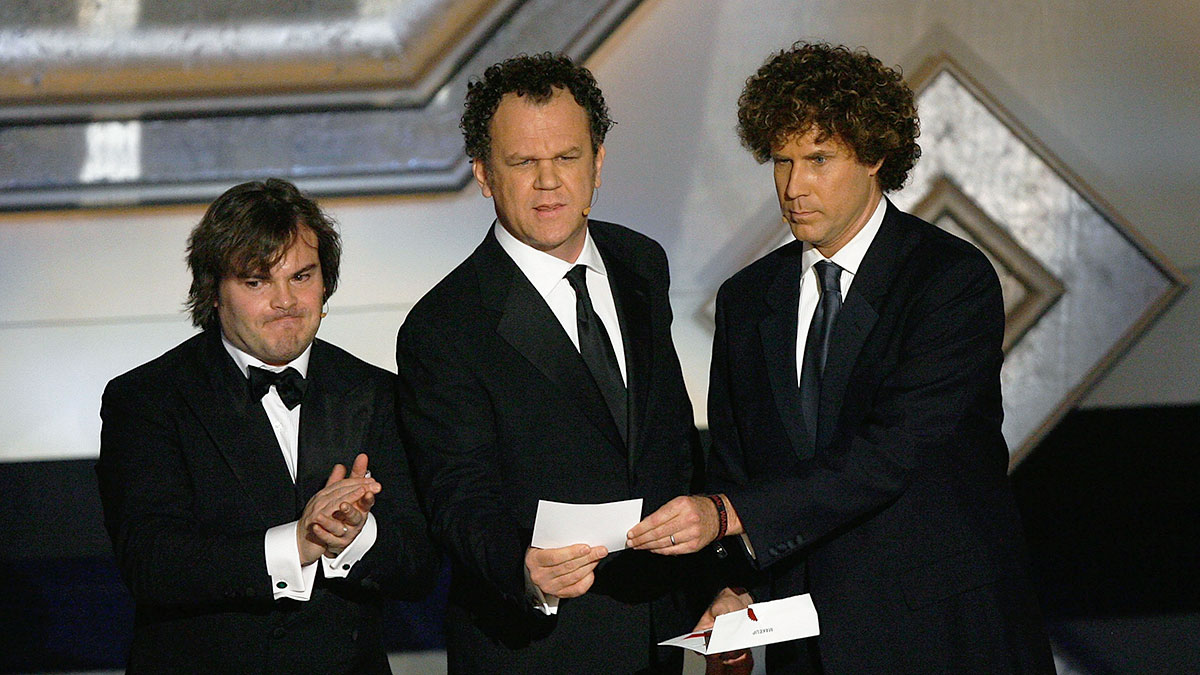Gold: Calidus opts for conservative PFS, but Warrawoona is still a very good-looking project

Jack Black, John C. Reilly, and Will Ferrell during the 79th Annual Academy Awards in 2007. Pic: Kevin Winter/Getty Images
Calidus Resources (ASX:CAI) has prudently opted for a more conservative 1.25moz Warrawoona gold project pre-feasibility study, in the wake of a number of failed or underperforming Australian gold developments.
Miners usually undertake up to four different types of studies to see whether or not a resource can be mined economically. These are, in order of importance, scoping, preliminary feasibility (PFS), definitive feasibility (DFS) and bankable feasibility (BFS).
The fast-moving Calidus, which rose from the ashes of a failed pharma stock, only acquired Warrawoona in March 2017.
The conservative PFS is based on a maiden reserve of 418,000oz, which underpins an initial six-year, ~100,000oz per annum operation with a life-of-mine all-in sustaining cost (AISC) of about $1,159/oz.
AISC is good measure to appraise the profitability of a project because it includes everything, from mining, refining and transport, through to administration and exploration.
Typically reserves refer to discoveries that are commercially recoverable using existing technology, while resources are either not yet commercially viable or are mere speculation.
There’s just more certainty that the gold is in the ground, as predicted, when companies prove up a reserve.
Warrawoona boasts a post-tax net present value (NPV) of $108m and internal rate of return (IRR) of 33 per cent, based on a $1,800/oz study gold price.
At current gold prices above $2000/oz this jumps substantially.
NPV and IRR are metrics used to assess the profitability of a project. The higher they are above 0, the more profitable a project will be.
Using a $1800/oz price, Calidus says it will pay back the $124m start-up costs within 26 months (two-and-a-bit years) from production start.
- Subscribe to our daily newsletter
- Join our small cap Facebook group
- Follow us on Facebook or Twitter
Calidus managing director Dave Reeves says Warrawoona will be a simple operation with strong margins and cashflow.
“It also has substantial potential for growth in the mine plan material and mine life, as demonstrated by recent exploration results,” he says.
Importantly, Calidus says the conservative approach minimises the mining risks as the project moves into Bankable Feasibility Stage.
This is a prudent move.
New gold producers have not performed well lately. Gascoyne (ASX:GCY) is in administration, while Dacian Gold (ASX:DCN) is grappling with well-publicised production issues.
“We have deliberately taken a conservative approach to the modifying factors applied to the anticipated mined grade because this is the highest sensitivity in any project,” Reeves says.
“We will undertake systematic drilling in the next quarter to further improve our knowledge of the orebody as another step in the de-risking process.
“A subsequent grade control programme prior to construction in conjunction with the drilling to a planned Measured Resource will be applied to both the wider resource model and the feasibility modifying factors.”
Project permitting will take 12 months, Reeves says, during which time Calidus will finalise the Feasibility Study, secure project finance, and continue regional and extensional exploration to grow the mine life.
UNLOCK INSIGHTS
Discover the untold stories of emerging ASX stocks.
Daily news and expert analysis, it's free to subscribe.
By proceeding, you confirm you understand that we handle personal information in accordance with our Privacy Policy.








